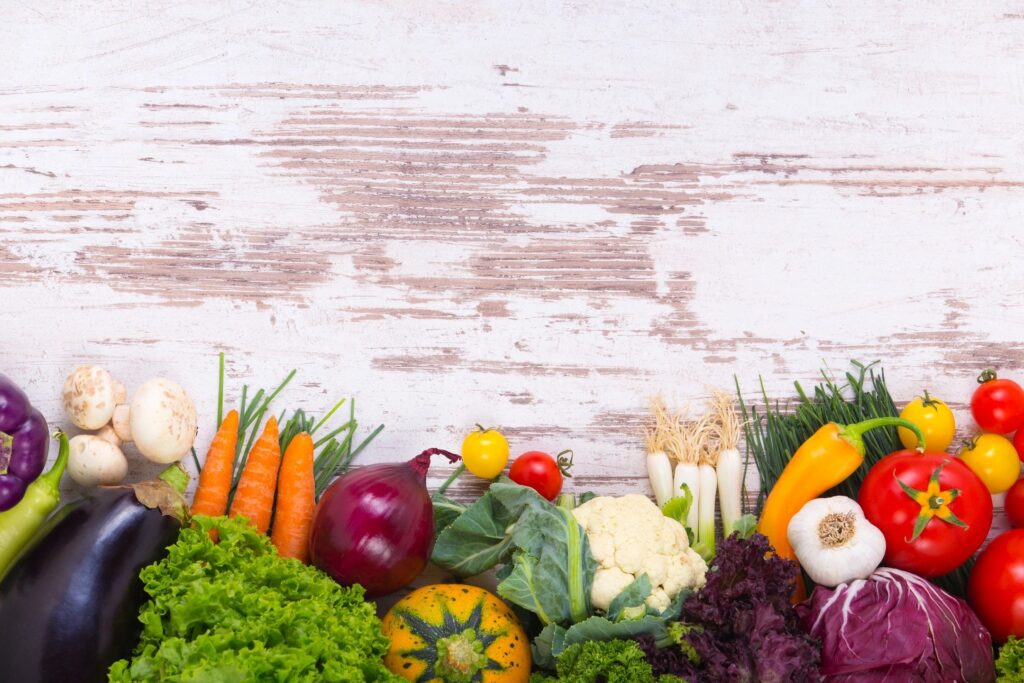Fiber is having a moment in the world of hormone health, almost as much as protein. It’s trending especially for women over 35, in order to support perimenopausal symptoms. But in my opinion, most people simply aren’t getting the recommended daily amount, which is at least 25 grams per day.
So let’s talk about WHY fiber is so important for hormone health, then I want to share my top tips for increasing your fiber to hit that recommended daily amount.
- Fiber Helps Balance Estrogen Levels
As estrogen levels fluctuate in perimenopause and decline in menopause, excess estrogen metabolites can contribute to symptoms like weight gain, mood swings, and breast tenderness. Fiber—especially soluble fiber—binds to estrogen in the gut and helps eliminate excess amounts through the stool. Studies show that women with higher fiber intake have lower circulating estrogen levels, which may reduce the risk of estrogen-dominant conditions like fibroids and breast cancer. - Fiber Supports Gut Health and Reduces Inflammation
The gut microbiome plays a major role in digestion, metabolism, and immune function. Prebiotic fibers (found in certain plant foods) feed beneficial gut bacteria, promoting microbial diversity and reducing inflammation—both of which become more crucial with age. Research links fiber-rich diets to a healthier gut lining, improved digestion, and lower risk of conditions like leaky gut and irritable bowel syndrome (IBS), which can worsen with hormonal shifts. - Fiber Stabilizes Blood Sugar and Mood
Perimenopausal and menopausal women often experience blood sugar fluctuations, which can trigger cravings, fatigue, anxiety, and mood swings. Fiber slows the absorption of sugar into the bloodstream, preventing insulin spikes and crashes. A higher fiber intake has been associated with lower rates of depression and improved mood stability, likely due to its impact on blood sugar regulation and gut health (which affects serotonin production).
The last point I’ll make here is that there is a collection of bacteria in the gut called the estrobolome, and it plays a major role in metabolizing and breaking down excess estrogen. For women of all ages experiencing hormonal symptoms (PMS, PMDD, cramping, migraines, clotting, heavy flow, etc.), nourishing the estrobolome by increasing fiber can be extremely helpful.
Now let’s get into HOW. Here are ten delicious, high-fiber foods you can incorporate into your daily meals:
- Lentils (8g fiber per ½ cup cooked) – Great in soups, salads, or as a side.
- Chia Seeds (10g fiber per 2 tbsp) – Add to yogurt, smoothies, or oatmeal.
- Avocado (5g fiber per half avocado) – Spread on toast, add to salads, or eat with eggs.
- Berries (4-8g fiber per cup, depending on type) – Mix into yogurt, oatmeal, or eat as a snack.
- Flaxseeds (6g fiber per 2 tbsp) – Blend into smoothies or sprinkle on oatmeal.
- Sweet Potatoes (4g fiber per medium potato, skin on) – Roast, mash, or cube for bowls.
- Dark Leafy Greens (3-5g fiber per cup, depending on variety) – Use in salads, smoothies, or sautés.
- Beans (6-8g fiber per ½ cup cooked, depending on type) – Add to soups, stews, and grain bowls.
- Pistachios (3g fiber per 1 oz) – Eat as a snack or add to yogurt and salads.
- Oats (4g fiber per ½ cup dry) – Use for oatmeal, overnight oats, or add to smoothies.
Need more ideas? I got you! Here are some fun, fresh meal ideas to shake up your routine:
1. Mediterranean Lentil & Chicken Power Bowl
Ingredients:
- ½ cup cooked lentils (8g fiber, 9g protein)
- 4 oz grilled chicken breast (32g protein)
- ½ cup chopped cucumber and cherry tomatoes (2g fiber)
- ¼ avocado, diced (2.5g fiber)
- 1 tbsp crumbled feta cheese (optional)
- 1 tbsp extra virgin olive oil + lemon juice for dressing
- 1 tbsp chopped pistachios (1g fiber, 2.5g protein)
The breakdown:
✔ Protein: 34g
✔ Fiber: ~14g
✔ Healthy Fats: From avocado, olive oil, and pistachios
2. Spicy Salmon & Sweet Potato Nourish Bowl
Ingredients:
- 4 oz grilled or baked salmon (30g protein)
- ½ medium sweet potato, roasted (3.5g fiber)
- 1 cup mixed dark leafy greens (4g fiber)
- ¼ cup cooked black beans (3.5g fiber, 4g protein)
- 1 tbsp ground flaxseeds (2g fiber)
- 1 tbsp tahini + lemon + garlic dressing
The breakdown:
✔ Protein: ~34g
✔ Fiber: ~13g
✔ Healthy Fats: From salmon, flaxseeds, and tahini
3. High-Fiber Avocado & Chicken Chia Wrap
Ingredients:
- 4 oz shredded chicken breast (32g protein)
- 1 grain-free cassava or almond flour tortilla
- ½ avocado, mashed (5g fiber)
- 1 tbsp chia seeds mixed into the avocado (5g fiber)
- ½ cup shredded red cabbage (1.5g fiber)
- 1 tbsp lemon juice + 1 tsp olive oil for dressing
The breakdown:
✔ Protein: ~33g
✔ Fiber: ~12.5g
✔ Healthy Fats: From avocado, olive oil, and chia seeds
4. Simple High-Fiber Salmon & Avocado Mash Bowl
Ingredients:
- 1 can (5 oz) wild salmon or tuna, drained (30-35g protein)
- ½ avocado, mashed (5g fiber)
- 1 tbsp chia seeds (5g fiber)
- ½ cup chopped cucumber and cherry tomatoes (2g fiber)
- 1 tbsp lemon juice + 1 tsp olive oil for dressing
- Optional: Serve over a bed of dark leafy greens (adds ~2-4g fiber) or eat with gluten-free seed crackers
The breakdown:
✔ Protein: ~32-35g
✔ Fiber: ~12-16g (depending on added greens)
✔ Healthy Fats: From salmon, avocado, and chia seeds
My final thoughts: make sure that you are increasing your fiber gradually, so as not to create digestive upset. Drink at least half your body weight in ounces of water daily, and don’t beat yourself up if you have a low-fiber day. After all, a body in stress won’t digest.
